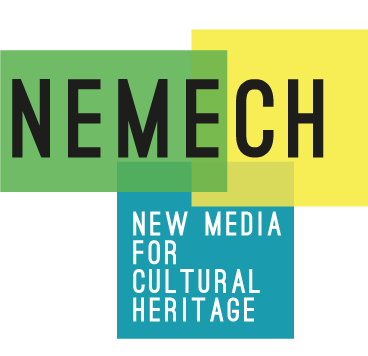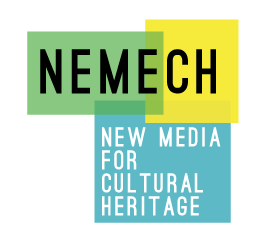SmartArt: A NEW WAY TO ENJOY THE MUSEUM THROUGH THE USE OF “SPEAKING ICONS”
MartART idea is the winner in the Culture of Make 2013 European Competition diversity which selected 12 original and innovative ideas for cultural projects, which make use of information and communications technology (ICT) for producing and disseminating cultural content. SmartArt promotes culture, the emotional and informal learning in museums, using clever icons to provide additional information relating to works of art without the use of any kind of QR code and barcode. With SmartArt for the first time the use of abstract codes is exceeded and the information can be linked to icons that are a direct copy of the original artwork. With these icons, users can find out in a clear and immediate way works of art which have related information and retrieve or interact easily with the information content of the work.
The system allows you to choose for yourself what information according to their interests and styles of visit, preserving images of favorite artworks, to produce a personalized storyboard gallery of these images and a storytelling of the visit to be shared through their social networks, to experience the culture in an interactive and engaging and stimulate curiosity for informal learning.
The prototype version of SmartArt Alpha 1.0 is currently being tested at the Educational Laboratory of the Museo Galileo in Florence and was submitted to NEMO – The Network of European Museum Organisations and Network LEM – The Learning Museum
ith the icons you can create thematic itineraries for visitors and can be used for recreational and educational purposes with different audiences, using a technology smart, simple and easy to use. Scanned images are saved within the app and can be reinterrogate even after the experience of the visit.
You can keep track of the interaction of the visitors with the works of the museum, diversify the content related to the works, to preserve images of works of art through a gallery favorite storyboard and create a storytelling of the visit to be shared through their social networks.
Press
- Press Realease EU Commission
- @diversity EU Competition 2013
- NEMO Network
- WIRED.CO.UK
- Invest in Tuscany – Regione Toscana pag 26
- MUSEI-It
- ANSA Europa
- Corriere Couinicazione Digitale
- La Repubblica –eccellenze italiane.it
- Archeomatica
- Tom’s Hardware
- Regione Lombardia
- Blog.GiovaniSì
- TechCorner
- myLWB
- tecnici.it
- Euroko
- OneGeek
- Euromed Carrefour Sicilia
- Ingegneri.info
- Clickus Web Agency
- Tech Conversations
- Telecompaper
- Europa Nu
- EuReporter
- Art Marketing Management
- Cultural Entrepreneurship News
- Archeomatica Review Vol 5, N° 3 (2014)
- istart
- MWF2014: Museums and the Web Florence 2014
- Museum Heritage Show London 2014
- Cannes Creative Investment Forum – F6s
- EXPO delle Sturtup

